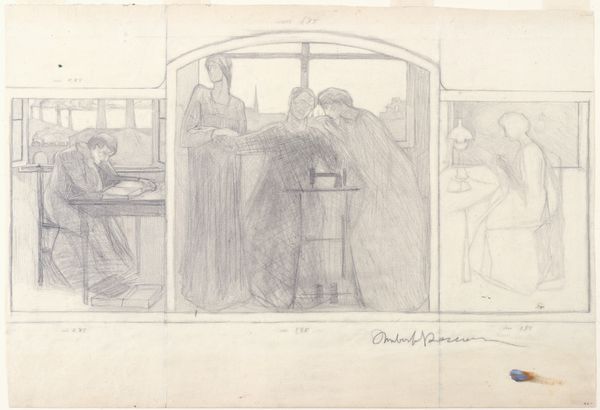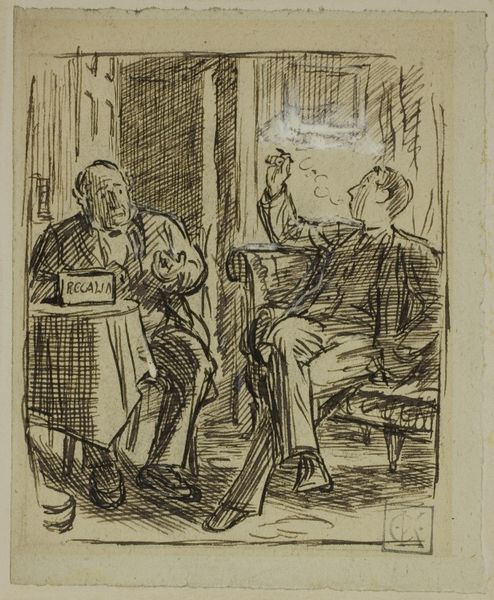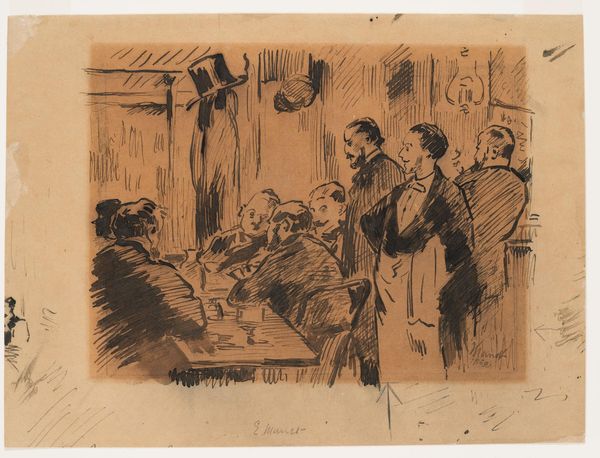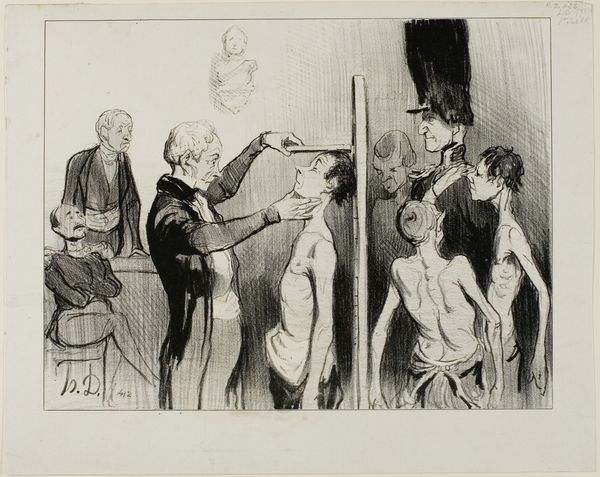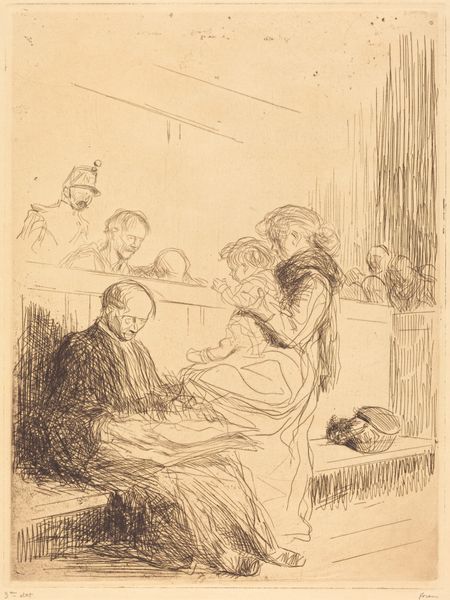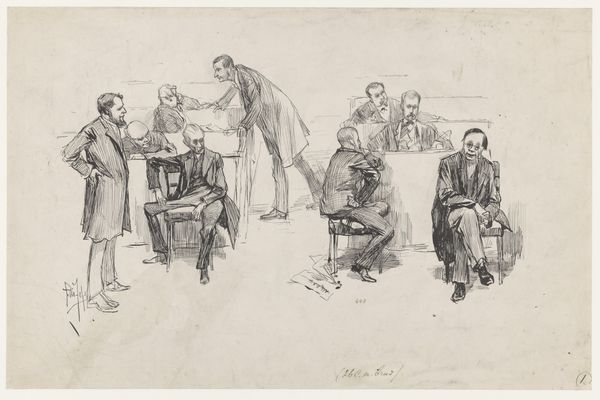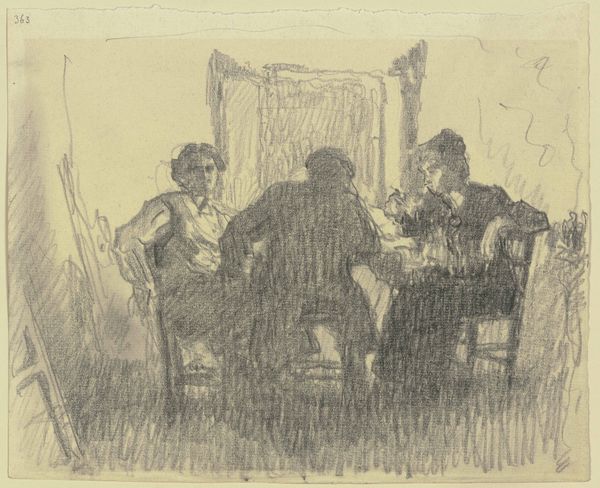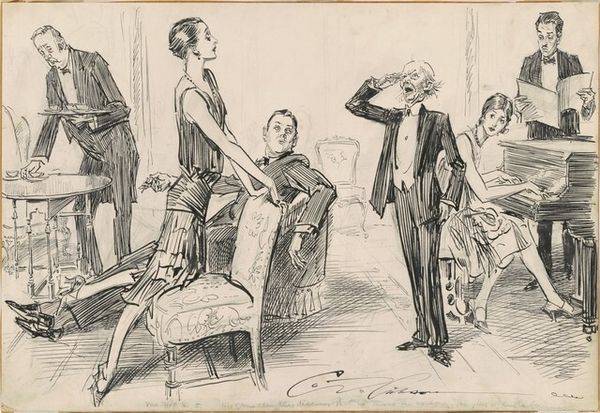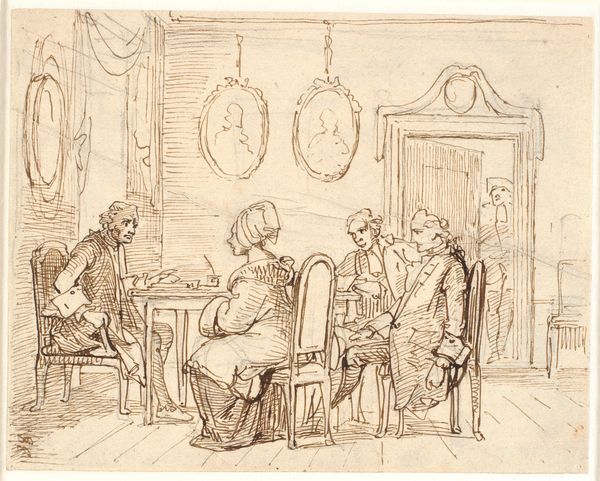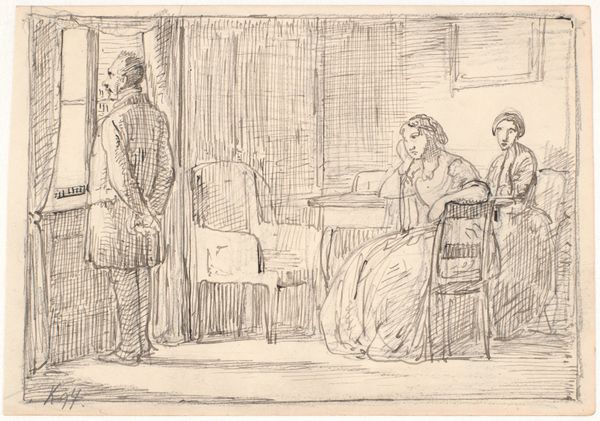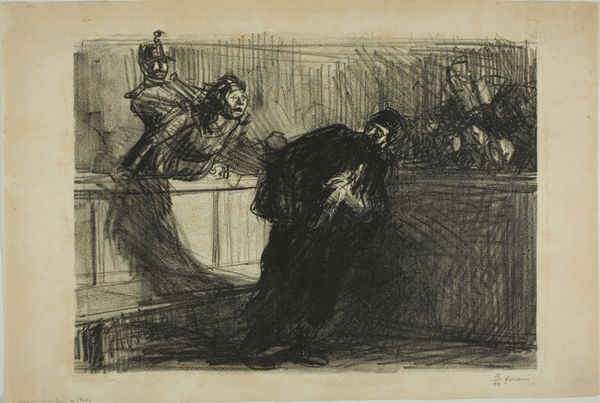
drawing, print, gouache, paper, ink, pencil, chalk, pen
#
drawing
# print
#
gouache
#
pencil sketch
#
figuration
#
paper
#
ink
#
pencil
#
chalk
#
pen
#
genre-painting
#
academic-art
Dimensions: 155 × 233 mm
Copyright: Public Domain
Curator: Here we have Charles Samuel Keene's "Officer and Orderly," made between 1870 and 1891. The artwork resides here at the Art Institute of Chicago. It combines ink, pencil, chalk, gouache and pen in its creation. Editor: There's a charming simplicity to this sketch, it captures a very specific social interaction; almost feels like overhearing a private moment. I am drawn to the textural quality achieved with what appears to be simple materials. Curator: Absolutely. Keene was celebrated for capturing everyday life with such immediacy. This drawing reflects the socio-political climate of the British military, its officers and their subordinates, captured within domestic interior space. The artist produced illustrations for "Punch," so consider how those shaped popular perceptions of the Victorian social strata. Editor: The visible strokes reveal the labor behind this seemingly effortless scene. Look closely—you see pencil underlying ink, a whole process of building the composition, and a possible printing process that reflects printmaking’s wider availability to the general population as visual and political matter for dissemination. Also the figure in the background seems sketched on the back and drawn with chalk instead of ink or pencil! Curator: His role at Punch allowed him to be highly influential on public perception. How do you think his quick, unpolished technique shaped views towards British officers during the late 19th century? This glimpse of a working officer gives a hint to a wider societal structure! Editor: Perhaps Keene wanted to show an accessible, working individual, almost diminishing a perceived hierarchy through the materiality itself! By not using oil or canvas, but using these everyday methods, it removes an assumed higher status that would have been gained if Keene focused on high society and their aristocratic activities. Curator: I find it remarkable that Keene, through something so understated, engaged so deeply with prevailing class tensions and imperial authority. Editor: Seeing these combined mediums at work reveals an intriguing insight into 19th-century making, culture and perception!
Comments
No comments
Be the first to comment and join the conversation on the ultimate creative platform.
